Can you mill grains at home to use in freshly baked bread and other baking? Why would you want to? Is home-milled flour better for you? In this post, we’re discussing everything about using a home grain mill, plus why you’d want to make your own flour.
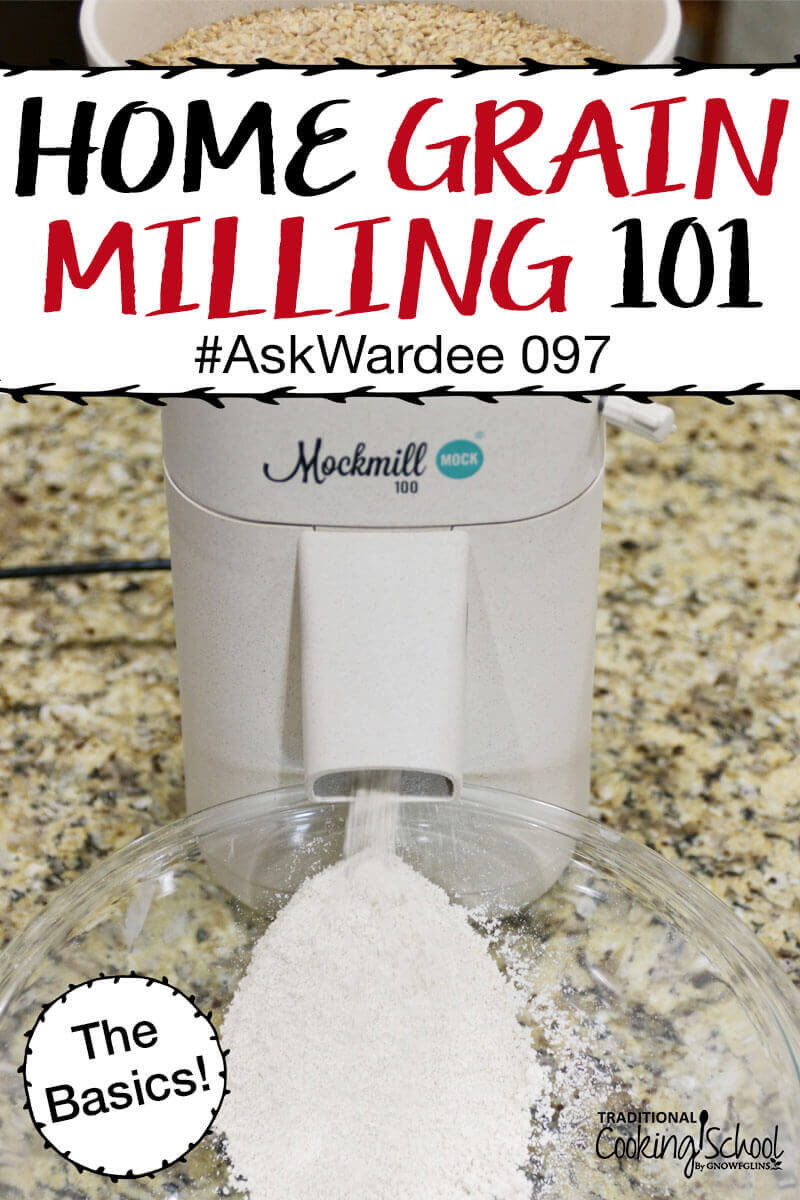
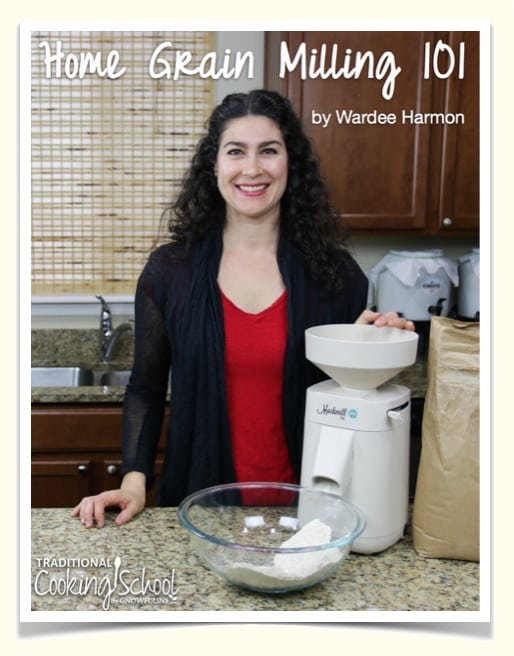
This is part 1 of 4. Want all 4 parts of the “Home Grain Milling 101” series combined into a FREE all-in-one eBook you can refer to offline? Click here to download the “Home Grain Milling 101” eBook for FREE!
- Vicky K. admitted… “Sorry — but I think I’m too lazy to mill my own flour!”
- And Teddy C. shared… “I buy organic flour, so why should I mill my own?”
I love these honest replies! 😉
Vicky and Teddy supplied just two of the nearly 200 replies I got via email and Facebook to this question: “What do you want to know about home grain milling?”
Not all of them made me laugh like Vicky’s and Teddy’s, though. I definitely got the message that, for most of you, home grain milling is both exciting and overwhelming… and you have lots of questions about it.
Yet, since I received way too many questions to answer in one episode of #AskWardee… I’m splitting them up into multiple episodes.
Starting today…
Table Of Contents
Home Grain Milling 101: The Basics
So, in Part 1 of Home Grain Milling 101 (The Basics) we’re tackling the fundamentals of grain milling:
- Why one would grind their own grains into flour anyway
- How to store whole grains
- What kinds of mills are on the market
- How to use a grain mill
- Plus more important “getting started” topics
In future episodes, I’ll discuss how to use and store your flour, how to make gluten-free flours, how to use freshly ground flour in place of store-bought flour, and the other creative (and fun!) uses for a home grain mill. It’s going to be a jam-packed series and I hope you can make them all!
(Or at least read through them… all the transcripts will be provided, as usual.)
Check out the particulars — including a milling demonstration — in today’s #AskWardee in print, podcast, or video below!
Also… watch the replay for the live masterclass all about the history and health of home grain milling.
Subscribe to #AskWardee on iTunes, Stitcher, YouTube, or the Podcasts app.
Why Should I Mill My Own Flour, Anyway?
Why would you want to grind your own flour, anyway? It does require more work, though how much is arguable. As you’ll see, a home grain mill makes grinding easy.
So… here are eight reasons you might consider going to the trouble of grinding your own flour…
- It’s healthier — the whole grain flour contains all of the nutrients, enzymes, bran, germ, oil… and they’re not lost (many nutrients are lost through oxidation as soon as 24 hours after grinding).
- It’s not rancid — after grinding and sitting in storage, the fat in the germ of whole-grain flours goes rancid. Grinding what you need and using it up within a few days ensures that you’re not consuming rancid food.
- It’s lighter — freshly ground flour is lighter than flour that’s been sitting around and getting heavy, which means that your baked goods are lighter.
- It tastes better — again and again, our family has confirmed that our baked goods made with home-milled flour taste much better than the alternative! (Often, the bad taste is due to rancidity in store-bought flours that have been sitting on the shelf awhile.)
- It’s more frugal — especially if you’re purchasing organic or specialty whole grains/flours such as gluten-free or ancient varieties of wheat. If you grind your own, you’ll see significant cost savings over purchasing.
- You get more control — over the fineness/coarseness of the grind and the amount you grind.
- It’s easier to store — whole grains are easier to store than flour; they keep indefinitely while flours oxidize and become rancid more quickly.
- It’s easier than you think! — mills like my favorite, the Mockmill, are so attractive sitting out on the countertop, and they’re literally ready to make flour instantly! (This one’s for you, Vicky!)
How Should I Store My Whole Grains & Milled Grains?
- Ed G. asked: “How do you store the whole grain?”
- Stacy S. asked: “How long will freshly milled flour last? What are good ways to store it to preserve its nutritional value?”
- Carrie G. said: “I would like info on proper storage of grains before they are milled and after. Also, info on milling sprouted grains, and the proper storage of them, both before and after they’ve been milled.”
- Helen T. added: “Just how quickly do grains degrade once milled? Is it that bad to grind some ahead of time and store them in the freezer? If I’m making something in the morning and then in the evening, can I leave that flour out all day? I wonder just how quickly homemade flour goes bad. I keep leftovers (since it’s sometimes hard to grind exactly how much you need!) in the freezer for things like a roux.”
Ed, Stacy, Carrie, Helen, and anyone else having similar thoughts…
The main enemies of whole grains and flour are oxygen, temperature, moisture, light, and critters.
Here are the particulars of storing each:
- Whole grains — Bring home, then freeze for 10 days to kill any critters/eggs. You can keep grains in the freezer or transfer them to storage containers such as 5-gallon food-grade buckets. Mylar bags and oxygen absorbers inside the buckets help. Or, use other airtight containers such as glass jars. Store the grain in a dry, cool place. No heat or moisture source nearby. Not in a hot attic, damp basement, or humid garage. Not near a water heater or clothes dryer. If kept cool, dry, dark, and critter-free, your whole grains will last many, many years (and even still sprout)! Sprouted grains should be stored similarly.
- Milled grains (flour) — Use within three days of grinding (room temperature), or refrigerate for up to seven days, or freeze up to six months. Milled grains should not be stored at room temperature for more than three days because of the danger of rancidity. Sprouted flour should be used/stored similarly. Although it does last longer than unsprouted, I follow these guidelines to be on the safe side of rancidity. 🙂
On #AskWardee 118, I showed how many berries to grind to get just the right amount of flour for your recipes.
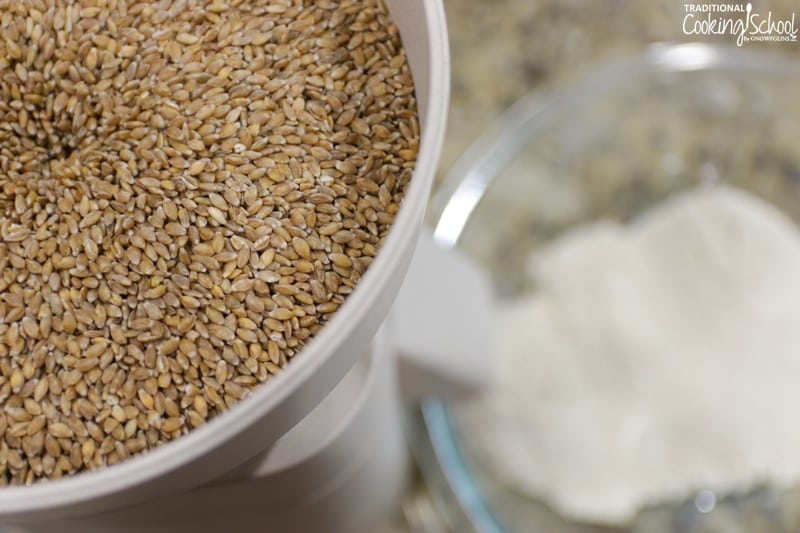
What Grains Can Be Milled Into Flour?
- Renee G. asked: “Which grains can be milled?”
- Kimberly T. asked: “Do some grains work better than others in mills?”
- Crystal S. asked: “One of my wishlist items is a grain mill. I have heard that some mills on the market don’t take sprouted grains. I want to buy a very high-quality mill, but I will be devastated if I get it and then find out it doesn’t take sprouted grains.”
You’ll find some differences between mills in what they can and cannot grind. Nearly all mills (unless you’re using a blender) will have a hard time with “wet” or “oily” grains, nuts, seeds, or spices. All those foods can be ground; it just depends on the equipment.
Some foods are soft enough — like flax seeds, chia seeds, nuts, coconut, or oats — that small batches can be ground in a coffee grinder, blender, high-powered blenders such as the Vitamix, or food processor. The food processor produces the coarsest result.
As a general rule, I use our Mockmill grain mill for the hardest and driest of foods — ancient grains like spelt or einkorn, corn, rice, dry beans, and even completely dried sprouted grains. These all make great flours! (Here’s more info on gluten-free milling.)
I usually pull out the Vitamix or coffee grinder for softer or oilier foods like oats, flax, chia, nuts, or coconut.
So, bottom line… as long as it’s not wet or oily, most grain mills will grind everything. You should also check with the manufacturer to see if corn/popcorn can be ground, as it’s very, very hard and can damage some mills.
Today, I am demonstrating the Mockmill home grain mill. All dry grains can be ground with the Mockmill, including:
- soft or hard wheat
- oat groats (dehulled oats)
- rice
- triticale
- kamut
- spelt
- einkorn
- buckwheat
- barley
- rye
- millet
- teff
- quinoa
- amaranth
- sorghum
- dent (field) corn
- fully dried sprouted grains
- also lentils, dry beans (pinto, red, garbanzo, kidney, and more), and dried, non-oily spices.
The Mockmill isn’t suitable for herbs, oily seeds like flax or sesame, popcorn, or fibrous materials.
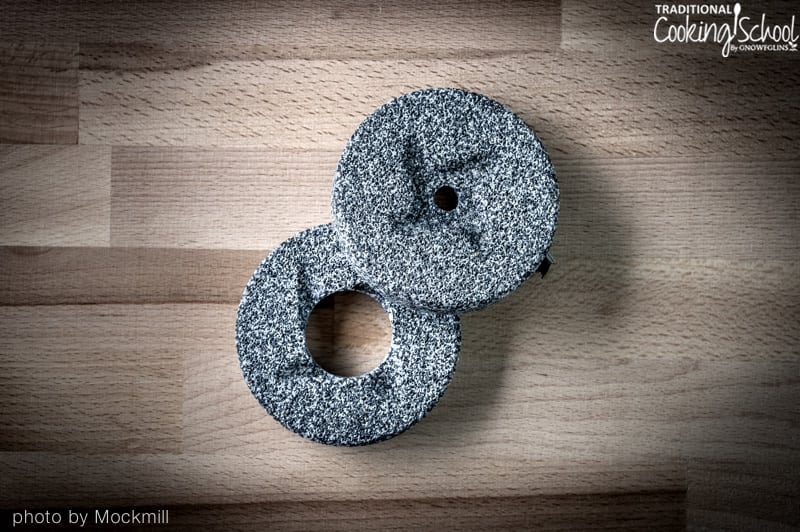
What Are The Types Of Grains Mills & Their Pros/Cons?
- Stephanie C. asked: “Hi, I have a Nutrimill. Are the stainless grinding blades doing damage to the nutrition of the grain? Should I have gotten a mill with stone wheels?”
- Louann L. asked: “I know nothing about milling grains so it will all be new information. I would like to know, to start, the best equipment to use.”
- Ellen H. asked: “Can I do this with my Vitamix?”
- Bryan G. asked: “What is the best electric and manual equipment to mill grain?”
And there were many more questions regarding equipment, but I think those four are fairly representative. So let’s get into it.
Here Are The “Types” Of Grain Mills
- Stone burr (such as the electric Mockmill or the non-electric Wondermill Junior Deluxe) — Grains are ground between stones. It’s an age-old process. In fact, my father tells stories of his mother (and my namesake, Tata Wardeh) who would go to the village stone grain mill each day to grind flour for the family’s daily bread.
With a stone mill, you can adjust from fine to coarse grinds or even cracked grains. The milling speed is on the slow side and the flour comes out cool to the touch (arguably more healthy).
If grains are higher in moisture or oil, or the stones overheat, the stones can become glazed. (This is easily fixed in the Mockmill by running dry grain through right after.) You can mill dry grains and legumes. Stone mills, like the Mockmill, will also grind nuts, seeds, and spices.
Do not grind oily foods such as sesame, flax, or poppy seeds. Can be on both electric and non-electric. The Mockmill stone grain mill offers a KitchenAid attachment! - Impact/micronizer (such as Nutrimill)— Impact mills have an internal milling chamber with concentric rings of stainless steel fins that never touch each other. These fins spin at tens of thousands of revolutions per minute and burst grain kernels into small pieces upon impact — thus the name “impact mill”. They produce fine flour very quickly, but cannot crack grains.
Downsides? 1) Impact mills are very loud; 2) they emit flour dust which can aggravate respiratory conditions, and 3) you cannot crack grains. Mill dry grains and legumes only. Electric only. - Steel or cast iron burr (such as Wondermill Junior Deluxe or Family Grain Mill) – These are similar to the stone mills, except grains are ground between steel or cast iron burrs. They can grind dry grains and legumes and oily nuts and seeds. Generally, the results are coarser than with stone or impact mills.
I have a friend with the Family Grain Mill who runs her grain/flour through twice, and it is still not as fine as she’d like. Can be both electric and non-electric. - High powered-blender (such as Vitamix or BlendTec) — The Vitamix is an amazing machine and the dry blade container works well for grinding small amounts of flour, even though the grain can be somewhat coarse and you have to be careful not to overheat the motor. In addition to the usual dry grains and legumes, you can even mill oily grains, nuts, and seeds.
The BlendTec is similar, however, it doesn’t always come with a tamper to help circulate the grains as the Vitamix does. (The tamper is very important for the consistency of grind!) - Other Options — Although I don’t recommend these if you’re milling often, milling in larger quantities, or desiring a great result, other mill options include the Champion juicer or KitchenAid attachment or a coffee grinder.
My Experience
For years, I used the Vitamix to mill our flour. I used the dry container and tamper and never ground more than 2 cups of grain at a time. Using the tamper, I ground at high speed for 2 minutes 15 seconds each batch. The flour came out quite warm (which I know now is not great) and as fine as it could be — but still not as fine as the mills I later used.
Then, we purchased a used Nutrimill, which was a huge improvement over the Vitamix. The flour comes out fine and makes beautiful bread, and also not so hot, so we experience less nutrient loss (though it was still warm). The Nutrimill is certainly loud, though!
And now, we use the Mockmill stone grain mill, which I absolutely love. The flour stays cool and comes out very fine. It’s super adjustable to get just the grind you need. The fine flour makes wonderful, light bread — even with 100% whole grains! I love that I can also crack grains or produce more coarse flour. Of all the mills I’ve used, it produces the healthiest, finest flour while being the most versatile mill overall.
We also have a non-electric stone grain mill (the Wondermill Junior Deluxe) to use when the power goes out. The Wondermill Junior Deluxe actually comes with both stone and steel burrs.
How Does A Grain Mill Work?
- Heather asked: “I would love to know about all grains including sorghum, millet, teff, quinoa, oats, and the soaking/rinsing process. Some grains like quinoa, rice, and sorghum say to rinse before cooking, but what about before grinding? I assume they are dirty and need rinsing before grinding?”
How to grind grains depends on the particular mill and I described the mechanisms above. Although I haven’t used all the mills out there, I have tried several (again, described above). They all involve a few steps, the first of which is following the manufacturer’s directions for safe operation, setting coarseness, etc.!
Generally, you start with clean grain. There’s no need to wet or rinse the grains, however, it’s a good idea to inspect the grains and remove rocks or debris manually. Rocks, especially, can damage your mill.
Then, add the grain to the mill and turn it on. Along the way, adjust the fineness/coarseness. Finally, dump out the flour, unless it comes out a shoot as the Mockmill does. Be sure to put a bowl there!
Watch either video embedded in this post to see how the Mockmill works. 🙂
Where To Buy A Grain Mill?
As you can tell from our discussion today, my favorite mill and the one I recommend is the Mockmill!
The Mockmill is a home stone grain mill, and it’s engineered and manufactured in Germany by Wolfgang Mock. He started making home grain mills back in the 1970s, so he’s been doing it for over 40 years. There’s an estimate that nearly 70% of the stone mills out there are by him.
This mill is super exciting because it contains the best features of Wolfgang Mock’s milling career, yet it’s much more affordable. The reason it’s more affordable is that this mill comes in a durable recycled material housing (instead of expensive wood).
I love the flour it produces because it’s super healthy and nutritious (being fresh ground), and it has a really fine texture. So, it makes wonderful, light bread, and it’s cool to the touch instead of being warm as some mills will do.
This mill will grind all grains, even gluten-free. It can even crack grains for porridge, and it has many other uses (like spices, nuts, and seeds).
You can see how it works in this video:
All the details including the very affordable price and FREE SHIPPING are on this page. By the way, it also comes as a KitchenAid attachment — very exciting for those who don’t want another appliance to take up any more room! 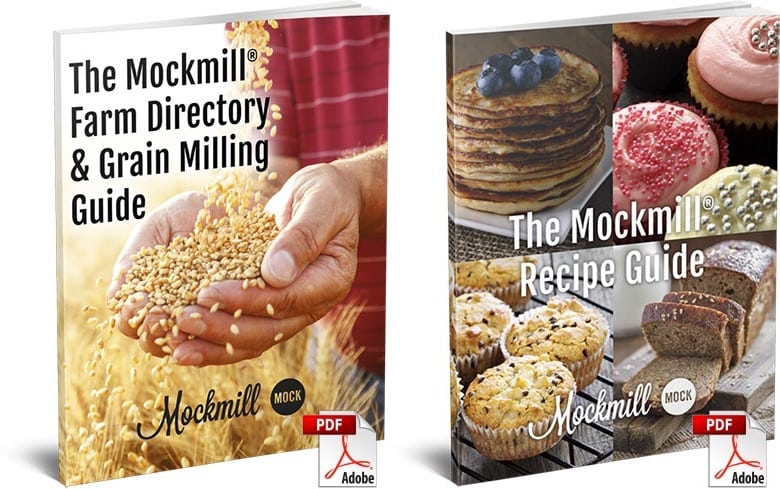
Also with your purchase of the Mockmill, you’ll get two fantastic eBooks from the Mockmill team: The Mockmill Farm Directory & Grain Milling Guide and The Mockmill Recipe Guide. Both of these eBooks are fabulous!
And for a limited time… if you decide to purchase the Mockmill, I’m throwing in complimentary copies of both my Sourdough A to Z and Einkorn Baking eBook and Video Packages. They’re each worth $64 for a total of $128 in additional bonuses from me.
To claim your extra free bonuses from me after purchasing the Mockmill, just go to tradcookschool.com/millbonus. Have your order # handy, because you’ll need it to claim the two free eBook packages!
Where To Buy Whole Grains For Milling
Here are my favorite places to buy whole grains:
- Einkorn.com — use this link for their best prices on the oldest and healthiest varieties of ancient wheat. It’s what we use exclusively in our no-knead sourdough einkorn bread and our other baked goods. Members, you’ll find an even better price on the Member Area resources page.
- Amazon.com — use this link; it’s a search for “organic bulk whole grains”.
- Azure Standard — this is a natural food warehouse that may or may not deliver in your area.
- Local farms — refer to The Mockmill Farm Directory & Grain Milling Guide (it comes with the Mockmill) or search locally… you never know what you might turn up!
The handbook that comes with the Mockmill — The Mockmill Farm Directory & Grain Milling Guide — contains easy links to the websites and Amazon.com listings of small family farmers who will gratefully ship their grains direct to your door!
This easy-to-follow guide will introduce you to the abundance of clean grains you can buy straight from small family farms across America.
You can find and buy every traditional variety of wheat, plus, rarer, “ancient” identity-preserved grains, and even a wide selection of naturally gluten-free grains and legumes. All of which you can mix ‘n’ match in your baking, discovering new family favorites along the way.
Get this guide free with your purchase of the Mockmill.
 This part 1 of 4. Want all 4 parts of the “Home Grain Milling 101” series combined into a FREE all-in-one eBook you can refer to offline?
This part 1 of 4. Want all 4 parts of the “Home Grain Milling 101” series combined into a FREE all-in-one eBook you can refer to offline?
Click here to download the “Home Grain Milling 101” eBook for FREE!
Helpful Links
- The Mockmill — my favorite and recommended (affordable) home stone grain mill — Hurry! The limited time offer to get my eBook packages valued at $128 won’t last long!
- Claim your FREE ($128 value) bonuses with your purchase of the Mockmill here!
- FREE No-knead Sourdough Einkorn Bread Recipe
- Why I Love Einkorn — in case you want to know why we bake with the healthier 5,000-year-old wheat called einkorn!
- Free “Home Grain Milling 101” eBook — it’s all 4 parts of this series combined into a single, FREE download from me!
- Milling Gluten-Free Grains Into Flour: Home Grain Milling 101, Part 2
- Baking with Fresh-Ground Flour: Home Grain Milling 101, Part 3
- More Fun Things Your Grain Mill Can Do!: Home Grain Milling 101, Part 4
- FREE Webclass: Baking With Fresh-Ground Flour
By the way, I want to give credit to Vickilynn Haycraft, my dear friend and “milling mentor”, who introduced me to grain milling years ago and who contributed to some of these answers.
I also want to thank Wolfgang Mock, whose stone grain mill — the Mockmill — I am using for demonstrating various milling tasks in this series.
And finally, I want to thank Jade Koyle from Einkorn.com for his wonderful einkorn grain and help with using the Mockmill!
More Mockmill Related Articles from the #AskWardee Show:
- Unboxing The Mockmill (Affordable Home Stone Grain Mill)
- Differences Between Nutrimill And Mockmill #AskWardee 120
- How To Simply & Easily Clean Your Mockmill Grain Mill #AskWardee 119
- Where To Buy Whole Wheat Berries, Grains, and Flour #AskWardee 148
- Buckwheat Flour 101: Choosing, Milling Flour, Sprouting, Recipes & More! #AskWardee 141
- Milling Soft Wheat In A Grain Mill {Homemade Pastry Flour} #AskWardee 131
- Is The New Ultragrain White Whole Wheat Healthy? #AskWardee 112
If you mill your own grains (or want to!), why do you do it? What is your favorite grain mill? What is your favorite grain to mill?
This post was originally published and written by Wardee Harmon on 11/8/17. It was updated and republished on 3/3/21.
...without giving up the foods you love or spending all day in the kitchen!

2 free books:
Eat God's Way
Ditch the Standard American Diet, get healthier & happier, and save money on groceries...
We only recommend products and services we wholeheartedly endorse. This post may contain special links through which we earn a small commission if you make a purchase (though your price is the same).

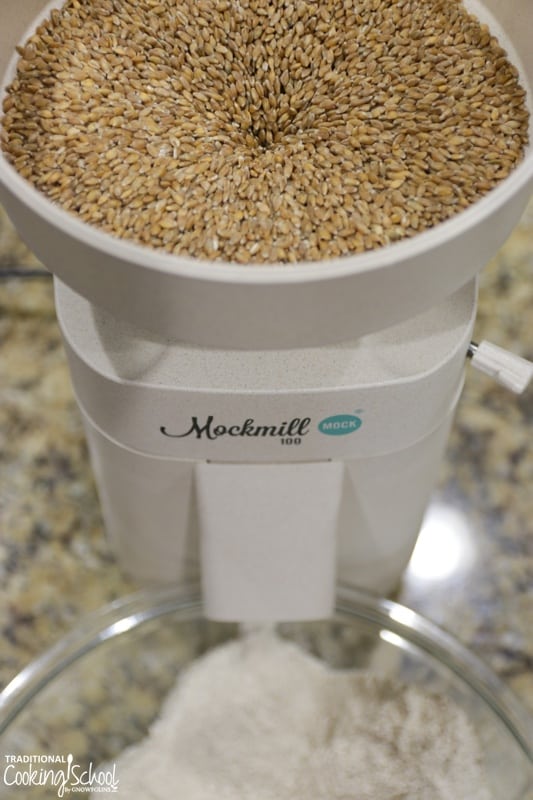
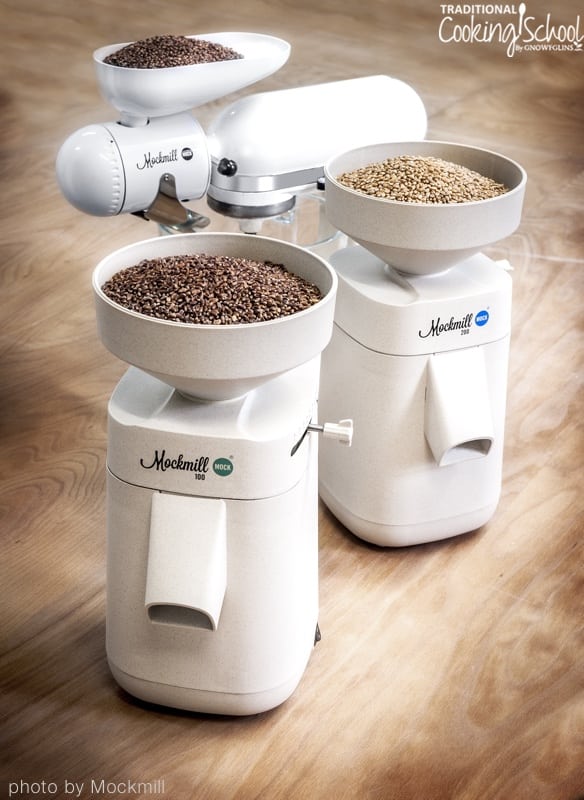


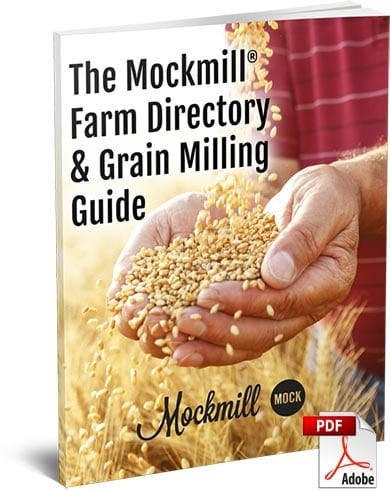

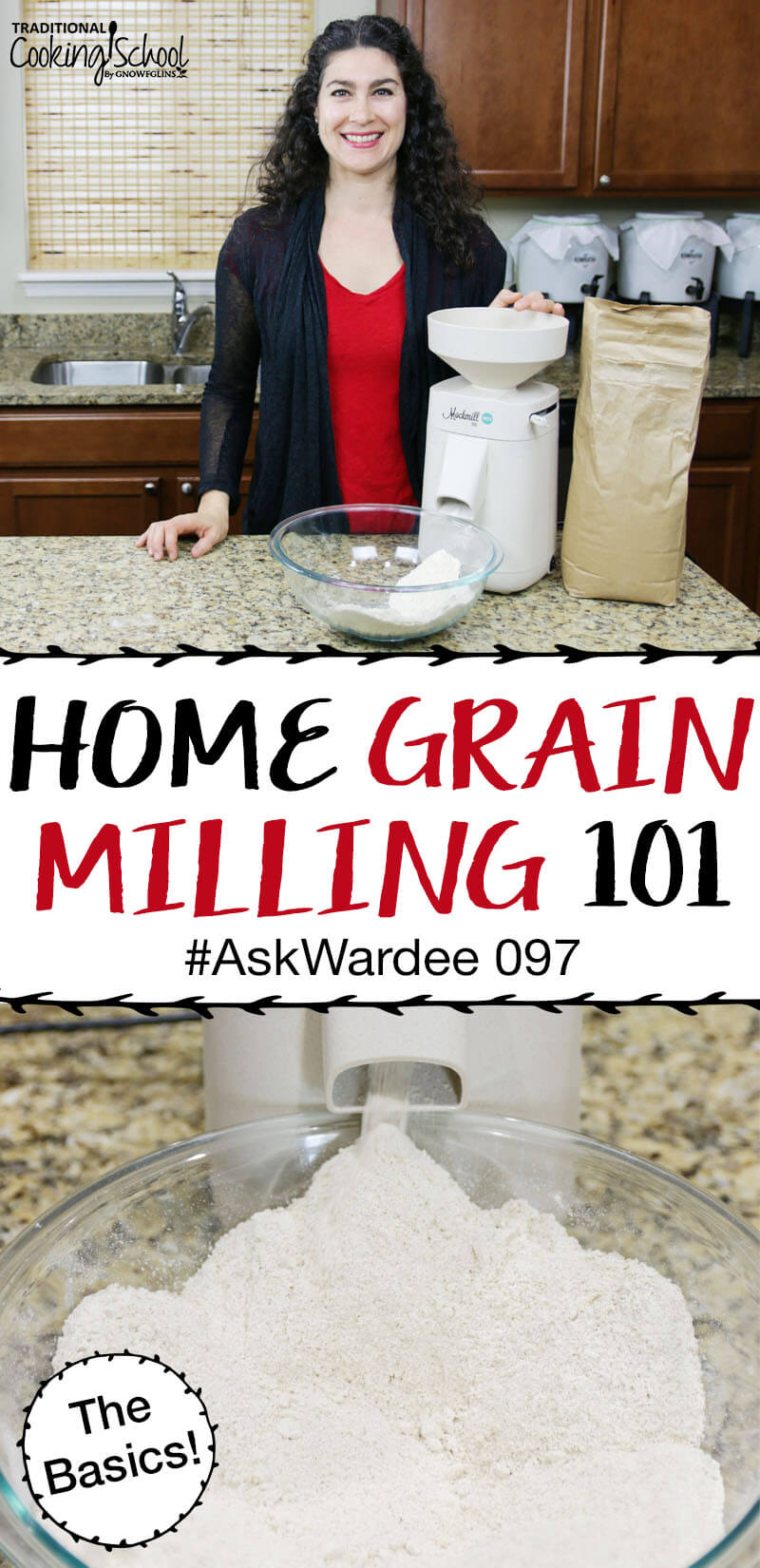
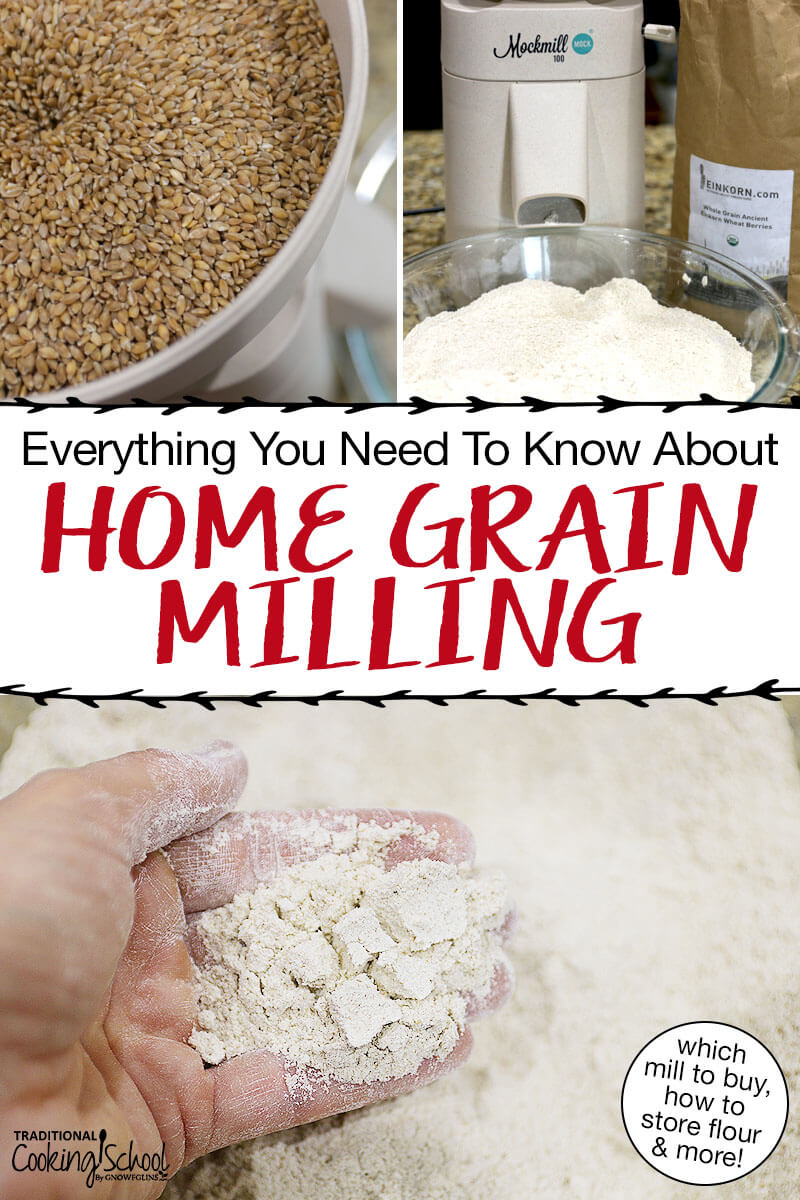
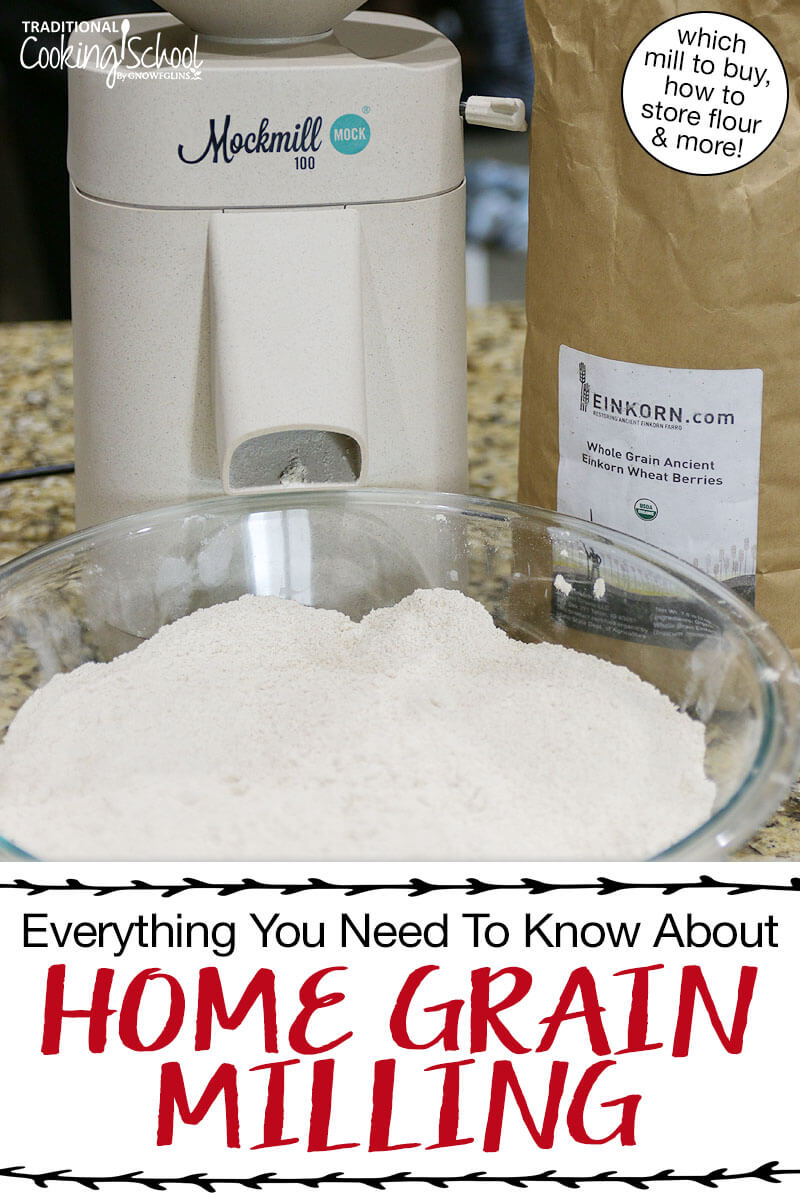
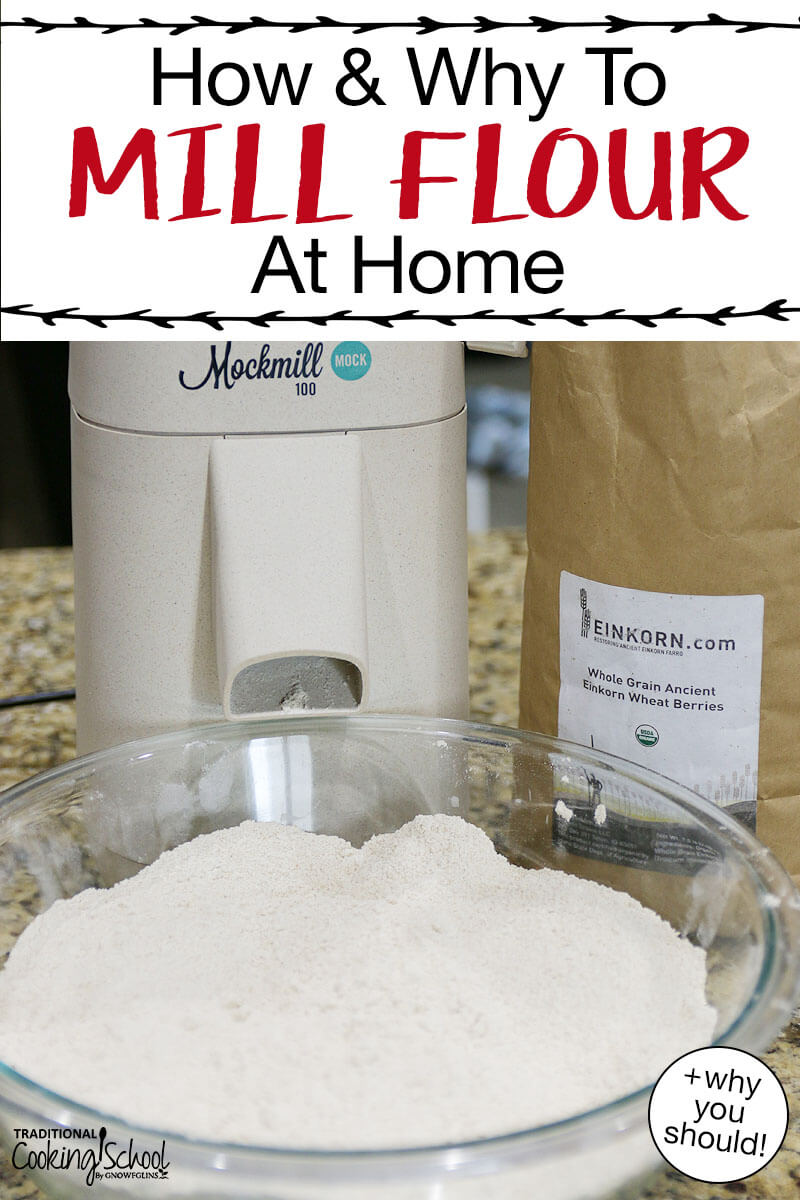
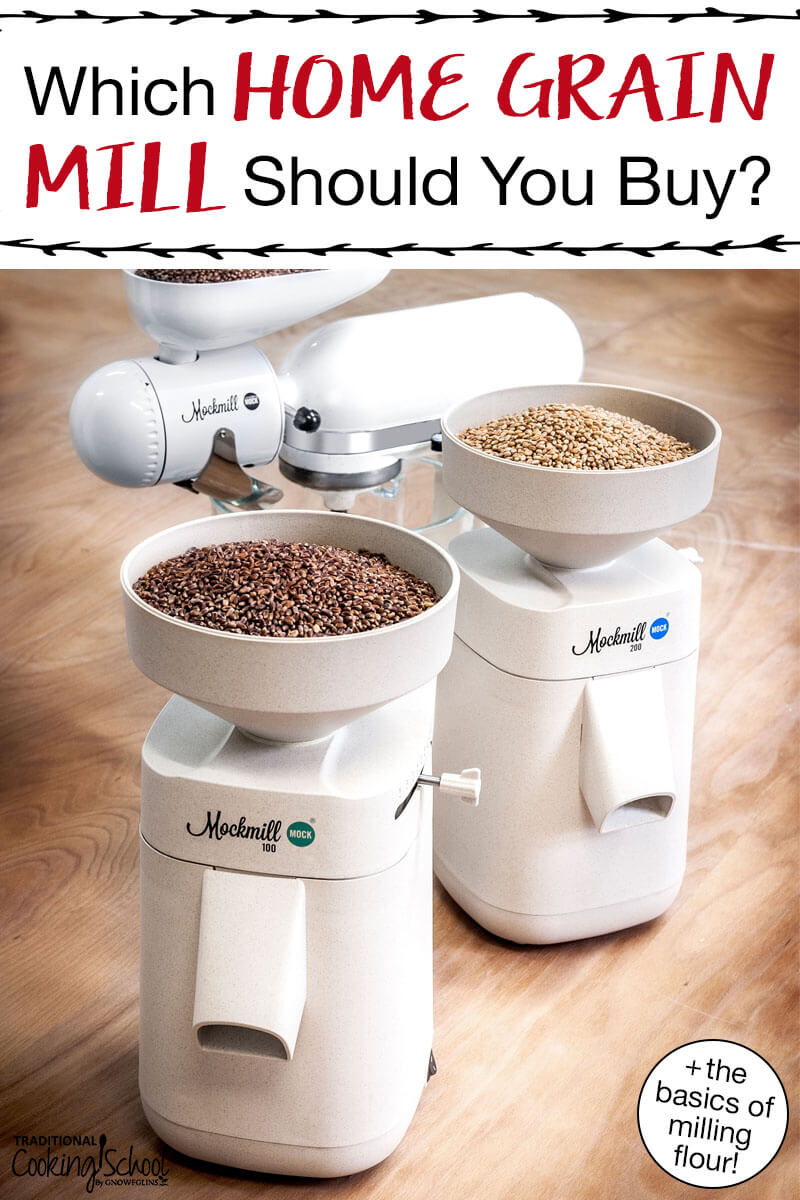
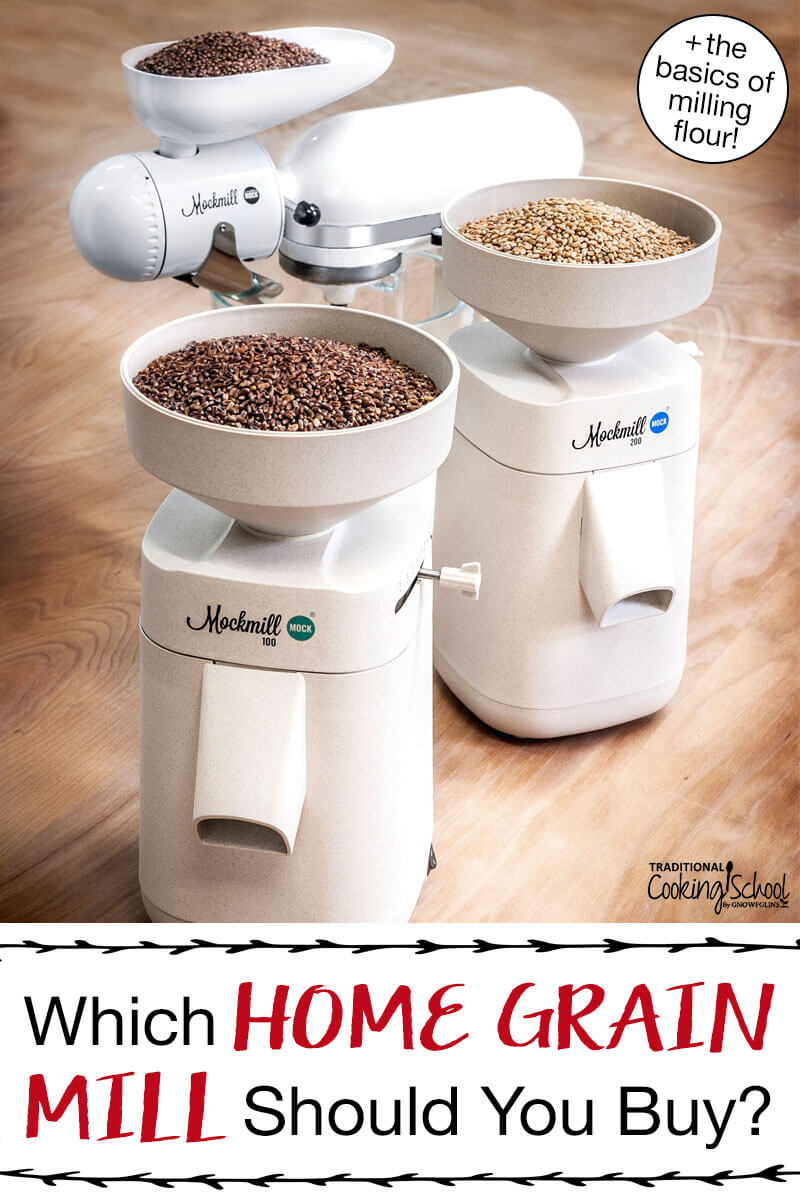
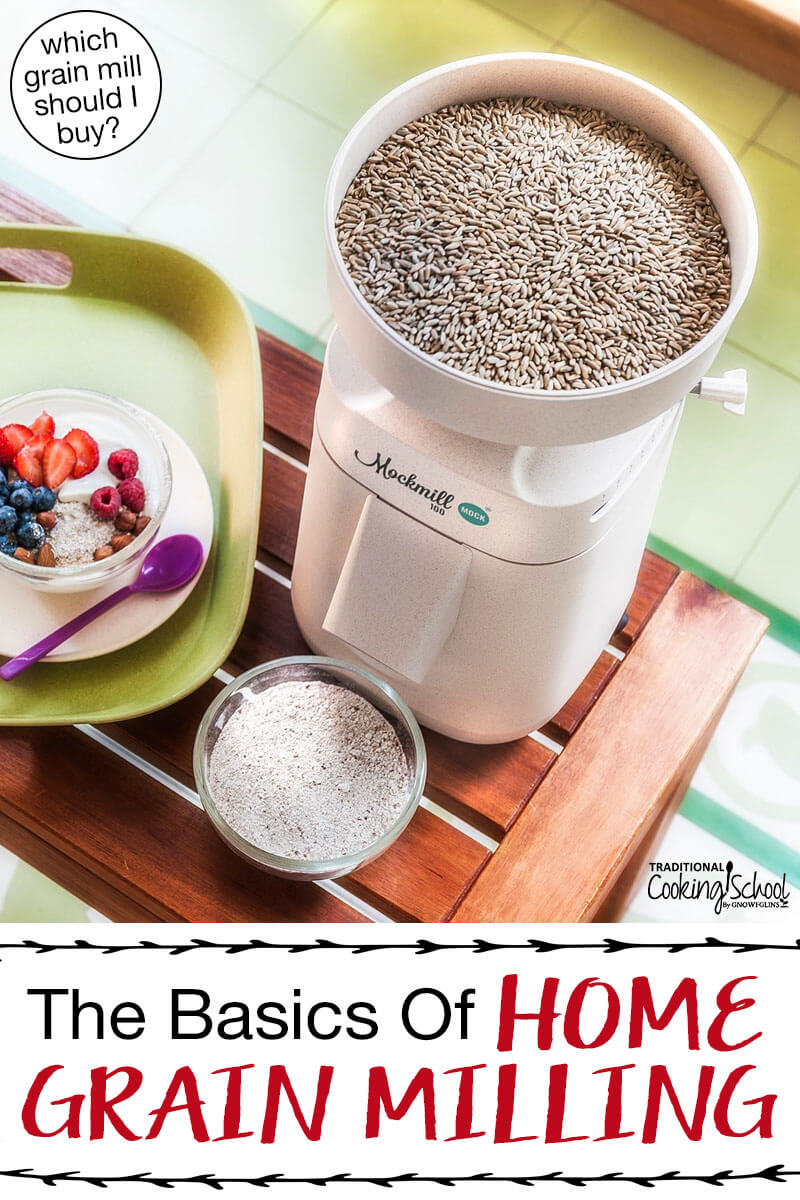
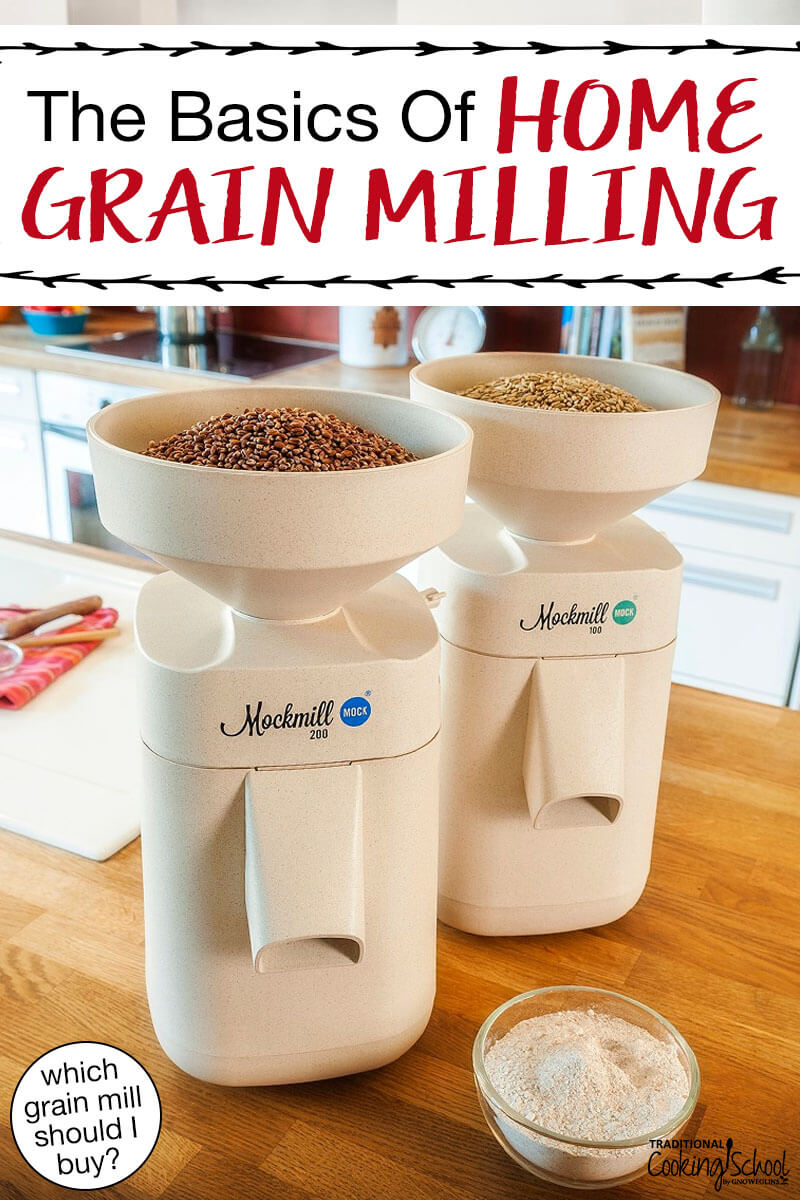
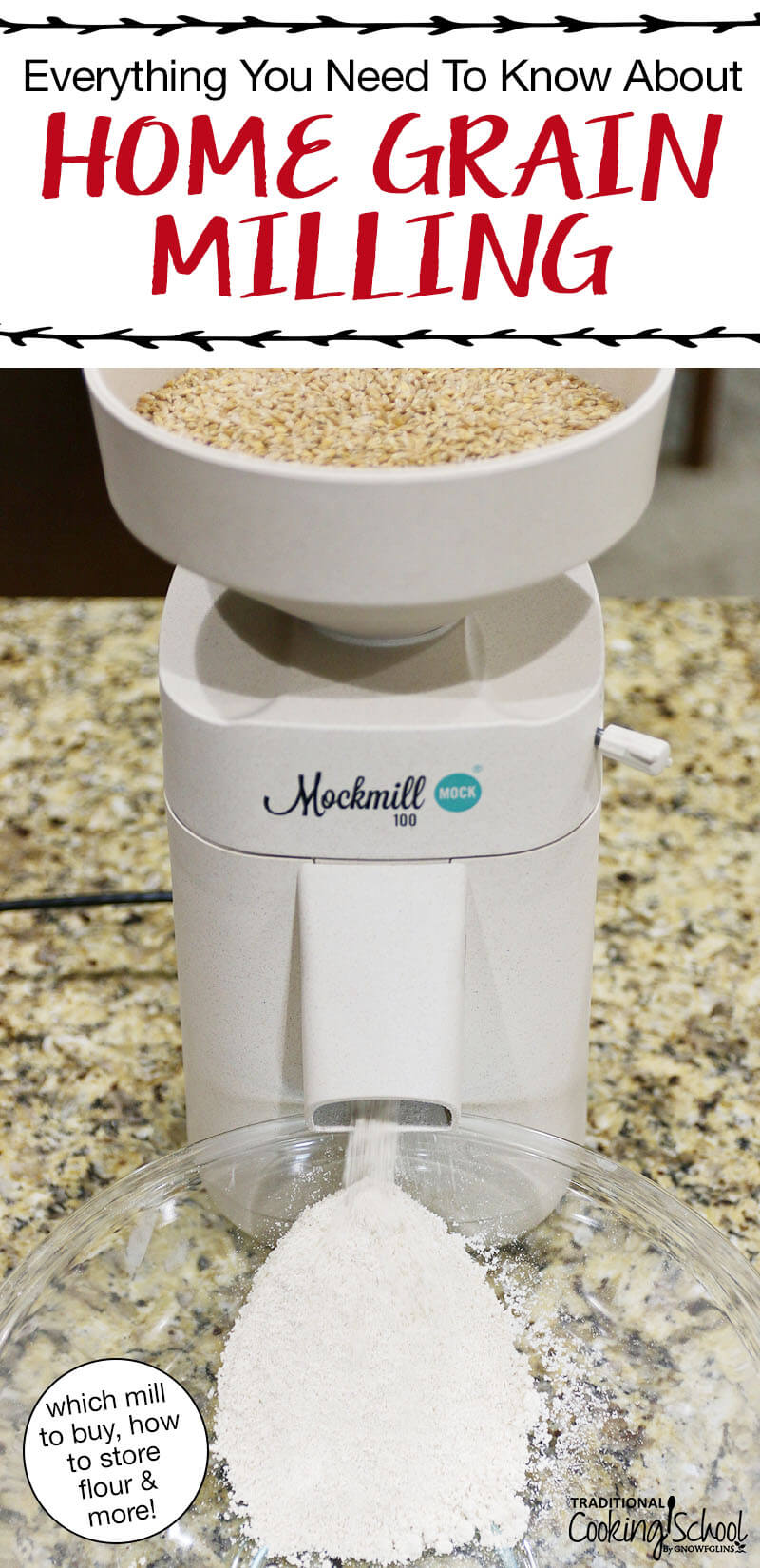
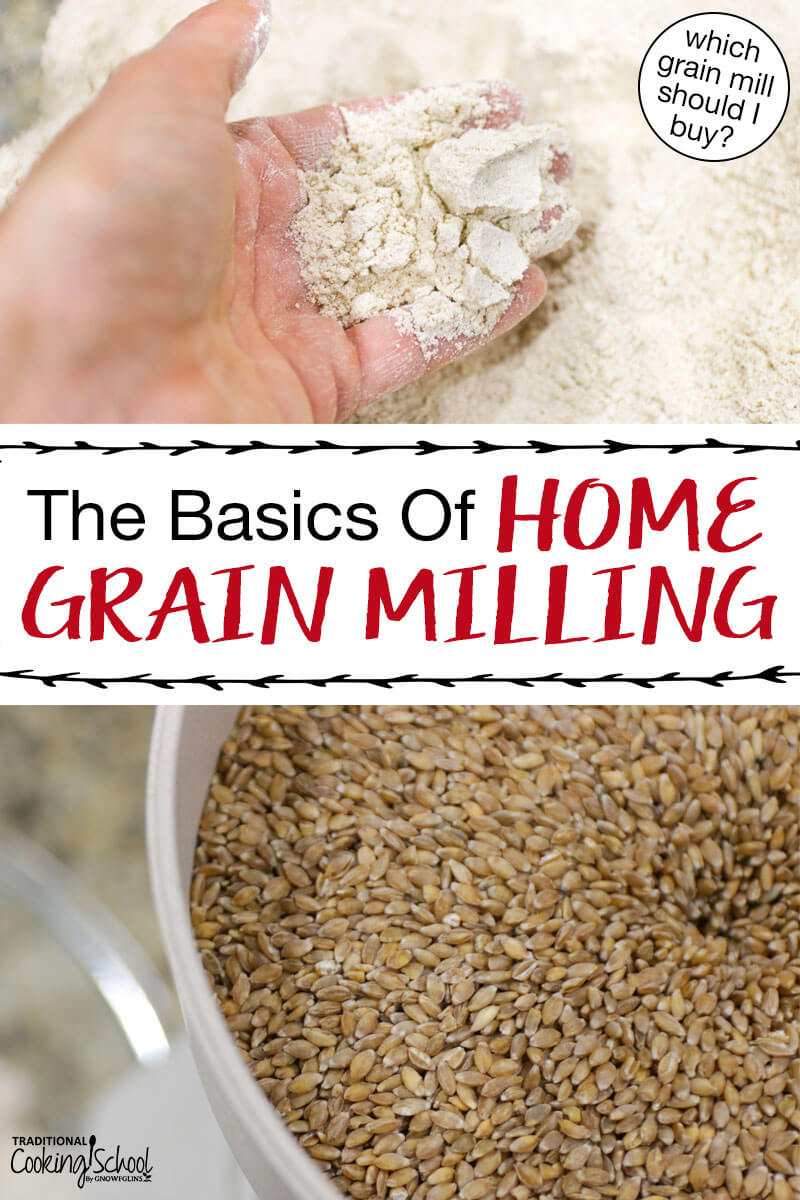
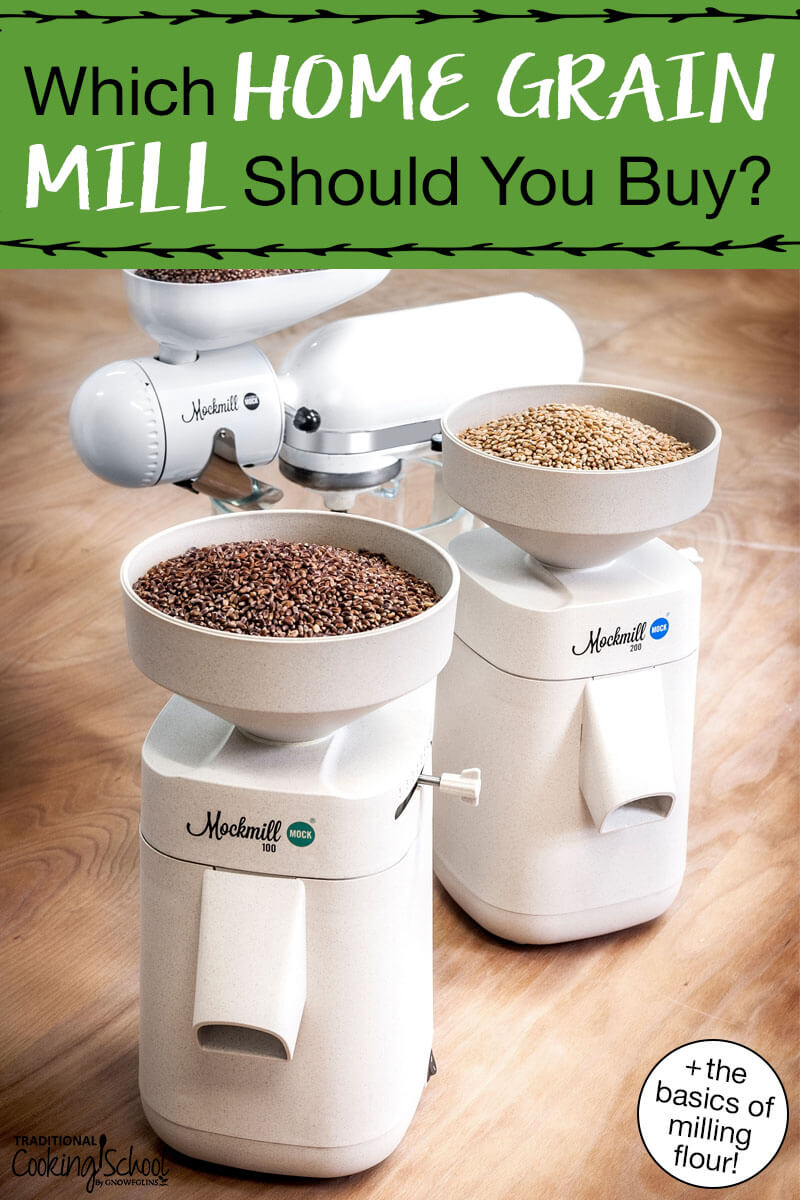
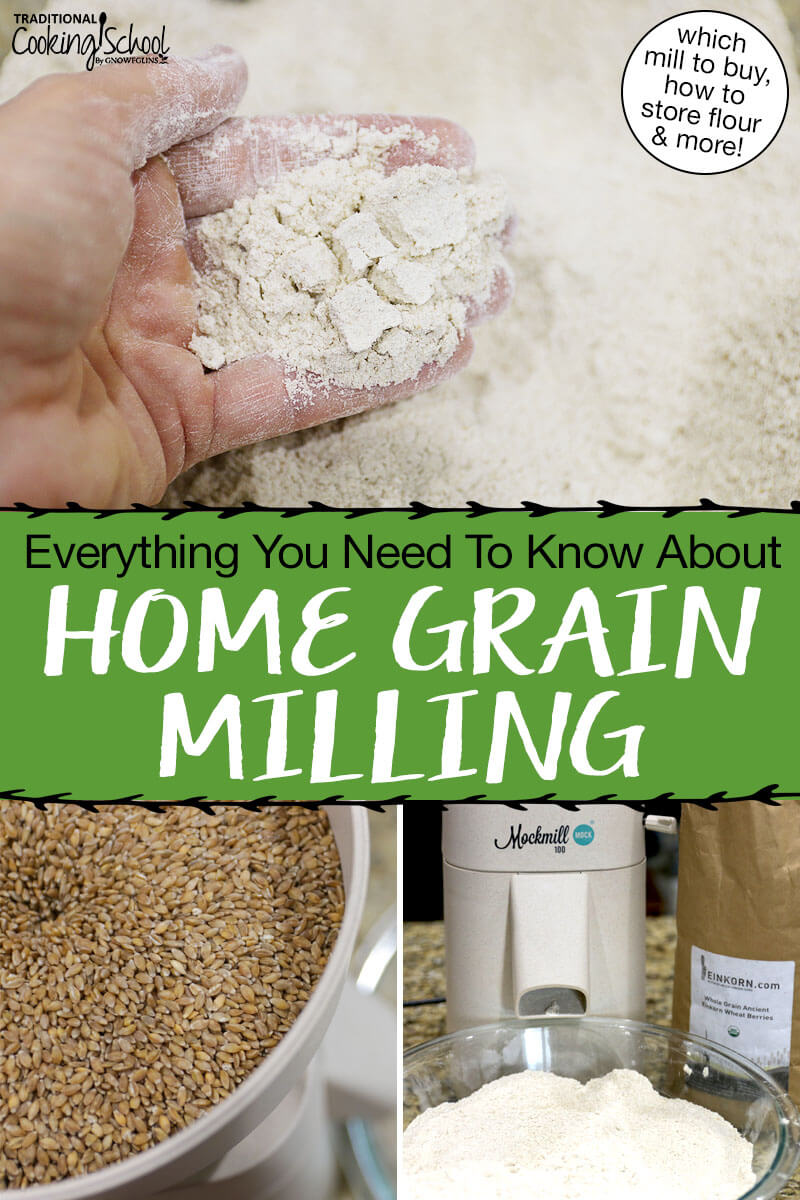
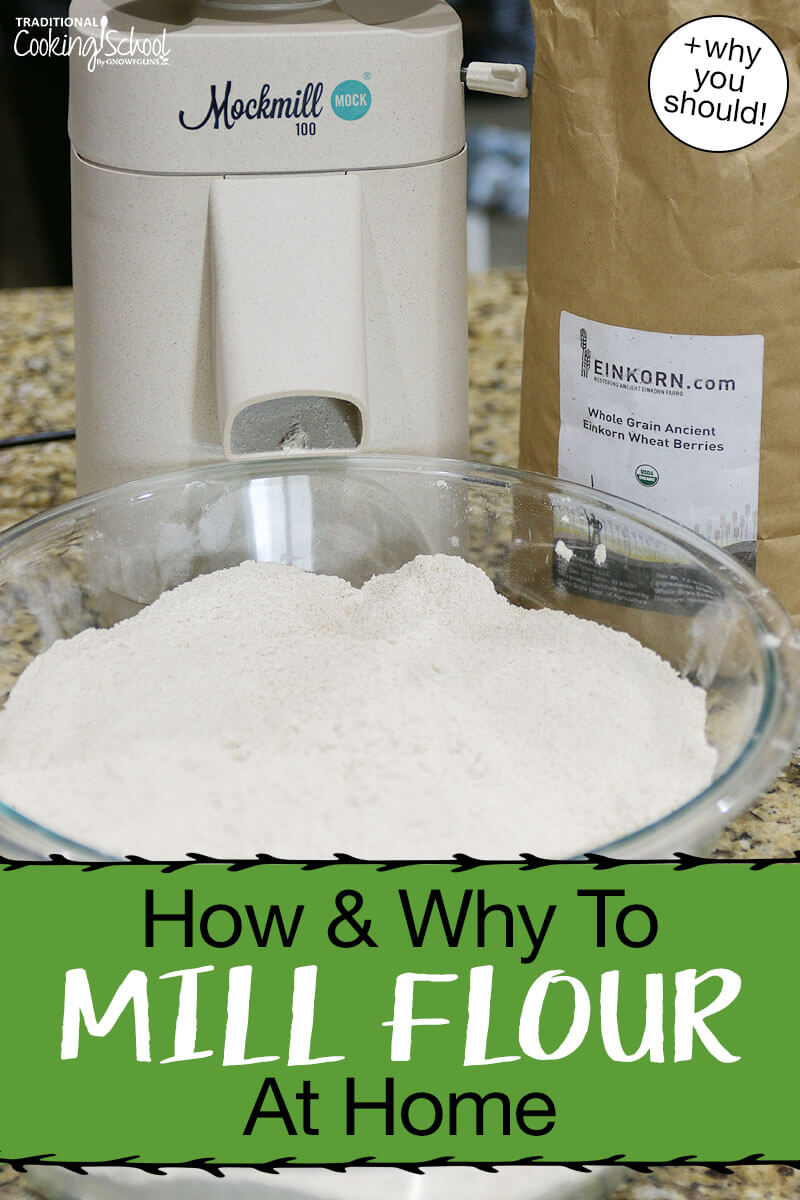
great info!!!! Been eyeing a hand mill for a long, long time but price as well as space are a problem. The option of attaching a mill part to my kitchenaid sounds like a good solution – I need 6 cups of flour for each bread baking session and I think that would work. Always disliked to store bags of flour, knowing the nutritional value goes down by the hour 🙂
GB — I’m so glad you found it helpful! I think the Mockmill KA attachment would work great for you. Be sure to let me know how it goes! <3
Pinning this. *Thank you, Wardeh.* For many years I’ve wanted to learn more about this topic, and you’ve been so thorough here. What a wonderful, informative post!!! 🙂
Megan ~ Thank you, dear friend! This was a labor of love for sure! Thanks for the pin and for the kind words. <3
For a long time, I used a Blendtec blender to grind grain.
I am always a little lost when Vitamix people people talk about tampering. I have never needed a tamper in the Blendtech and never felt it needed one ! I feel the grind is consistent, although you are right. It may or may not be as fine as a mill and I have always wondered if it was too warm. Then again, My Nutrimill can feel warm afterwards too.
Overall, the Blendtec is a good multi-use appliance and I might still use it to grind grain while away from home. But a regular mill is more efficient. So I guess it just depends on your budget or need.
I actually got my blender first while I was saving up for my mill and it worked well that way. . . . .
I still use it to grind my gluten free flours as cross contamination is a concern in a regular mill (that I also use to grind spelt). I like being able to have a container that I only use for CERTAIN kinds of grain and I know it is “clean”. If a regular mill has EVER had non gluten free grain, you can’t really clean it out. Well, my sales people tell me you can but it can cost $100 or so . . . .
That is something you might want to consider if you are in the same situation.
i am shopping around for a grain mill to give as a gift. I currently own a nutrimill. I believe you said you did use a nutrimill before the Mockmill. Can you tell me besides the size difference, and the obvious cleaning of the nutrimill, is the flour much finer from the Mockmill than the nutrimill?
How timely on finding the right grain mill. I have a Blendtec and recently bought a Nutramill. As far as the Blendtec, it beats the Nutramill period! I don’t like the Nutramill–too slow, does not grind fine enough, and the dust it speed out is ugh! Sad that I spent money on the NutramillI and did not know about the Mock Mill. I do have a very old All Grain stone grinder that did do a fairly good job. I never could part with it so relegated it to an out of the way closet. Please comment on your experience of producing fine almond and coconut flours. I get course meal with both instead of the fine textured commercial flours available . Thank you for your excellent work. I value your thorough and extensive service to your grateful fans ( one of which I am and appreciate you to the moon and back).
Hi Donna,
They both make very fine flour. Wardee has compared these side to side.
The main differences are that the Mockmill will also crack grains (the Nutrimill only does flour) and that there is a fine dust with the Nutrimill that can be a problem for those with respiratory issues. Also the flour is cooler out of the Mockmill.
So for all these reasons, Wardee prefers the Mockmill. 🙂
~ Millie, TCS Customer Success Team
My wife is gluten intolerant. She won’t eat anything where the label says “processed on equipment used for gluten ingredients”. Does that mean we would need two mills if I like things made with wheat flour? .
Hi Terry,
Yes and no, depending on the severity of the allergy/intolerance. Wardee will cover this coming week on episode 98. 🙂
~Danielle, TCS Customer Success Team
Hi Terry,
Yes and no, depending on the severity of the allergy/intolerance. Wardee will cover this coming week on episode 98. 🙂
~Danielle, TCS Customer Success Team
Thank you for another very informative video/article, Wardee!
I have owned a Nutrimill for several years and just purchased (through your link) the Mockmill. I love the idea of having a stone mill, and that it’s promises to be a lot more quiet while running is an exciting bonus! My original thought was that I needed a separate mill for doing gluten-free grains in order to avoid any cross-contamination issues. Since I won’t be doing any milling/baking for anyone with celiac, is that really necessary or can I just dust/clean off the stones before milling the GF grains? Personally, our home is small and so I’d love to only have to house one grain mill.
Thanks again!
Hi Christi,
If you’re not worried about complete separations of gluten and non-gluten grains you would be fine to dust it off.
Wardee goes over gluten-free milling in this post if you’d like more info: https://traditionalcookingschool.com/q-a/askwardee/home-grain-milling-101-milling-gluten-free-grains-aw098/
~Danielle, TCS Customer Success Team
Hi Wardee!
So, is the mockmill only to make grains to flour or have you tried to roll or flake grains, lets say corn flakes or rolled oats?
Hi Maria,
Yes, the Mockmill is only for making flours. It is not a grain roller.
~Danielle, TCS Customer Success Team
I was considering purchasing a mill because my Blendtec did not get the flour fine enough, then I found out that it doesn’t make flour very well in the big wildside jar. I did get a secondhand grain mill made by the blendtec company back when it was k-tec. It works great and make very fine flour. I will keep the blendtec regular jar for back up. If the this new-to-me one dies mockmill sounds fabulous. Oh, I made King Arthur scones and added and extra egg to account for the moisture need (Thanks Wardee!!!) and let them sit for several hours to soak before baking.
Hi,
I love your videos! I have a Nutrimill Harvest and would like your thoughts!
I’m not able to get fine flour like you mention with the Mockmill. Should I adjust the stones closer? I already have them where they grind together.
Thank you for your help, I wanted the Mockmill but couldn’t afford it at the time.
Hi Sharon,
I’m sorry we can’t help with the Nutrimill Harvest. You could contact them directly and see if they can assist you.
~ Vicki, TCS Customer Success Team
I stumbled upon your blog post and it couldn’t have come at a better time. I’ve been playing around with a sourdough starter so I’ve been baking more than normal. Through my brief stink with the sourdough starter, I’ve also been trying to buy local and rely less on big brand names. I’ve been trying to decide if I could or should make my own flour so you have answered my questions! Thank you so much!
Here’s another question for you! My son was recently diagnosed with diabetes and we are switching to a low carb diet. I believe that my fresh ground WW flour has fewer net carbs that store bought since it includes all the bran (which has more fiber) but can’t find any info to support this. Do you know if this is so? If so, do you know how much is in one cup? I’m trying to figure the net carbs. Thanks!
Hi Jean, This is from one of our team members: Everything I’ve seen on it says it’s negligible and it’s safer to just use the processed flour numbers especially when trying to avoid sugars for diabetics. If you’re going to eat carbs traditional wholesome ones are better obviously, but it’s best to play it on the safe side and assume the carb count is the same. ~ Vicki, TCS Customer Success Team
Hi Wardee. Thank you for the info. Is there a home milled flour website/forum/online ressources you would recommend? I am wondering what fresh milled flour recipe books are out there, or if I’d be better off getting a regular baking cookbook and adapting the recipes?
I just started milling wheat berries, using the clasic nutrimill grain mill. Although I am very happy with the results, just made pancakes today, the flour is a tad coarser than I am accustomed with the store bought product. Can this be remedied by grinding the flour twice?
Hi Amarilys,
Running it through twice is likely not going to make it finer. And also, home ground flour is usually not as fine as store bought flour because commercial mills are much more powerful than home mills.
~ Makenzie, TCS Customer Service Team